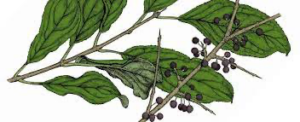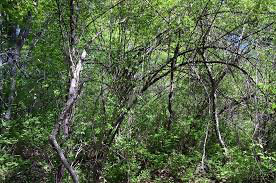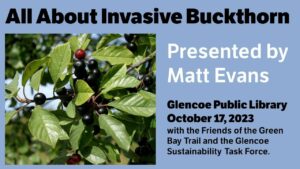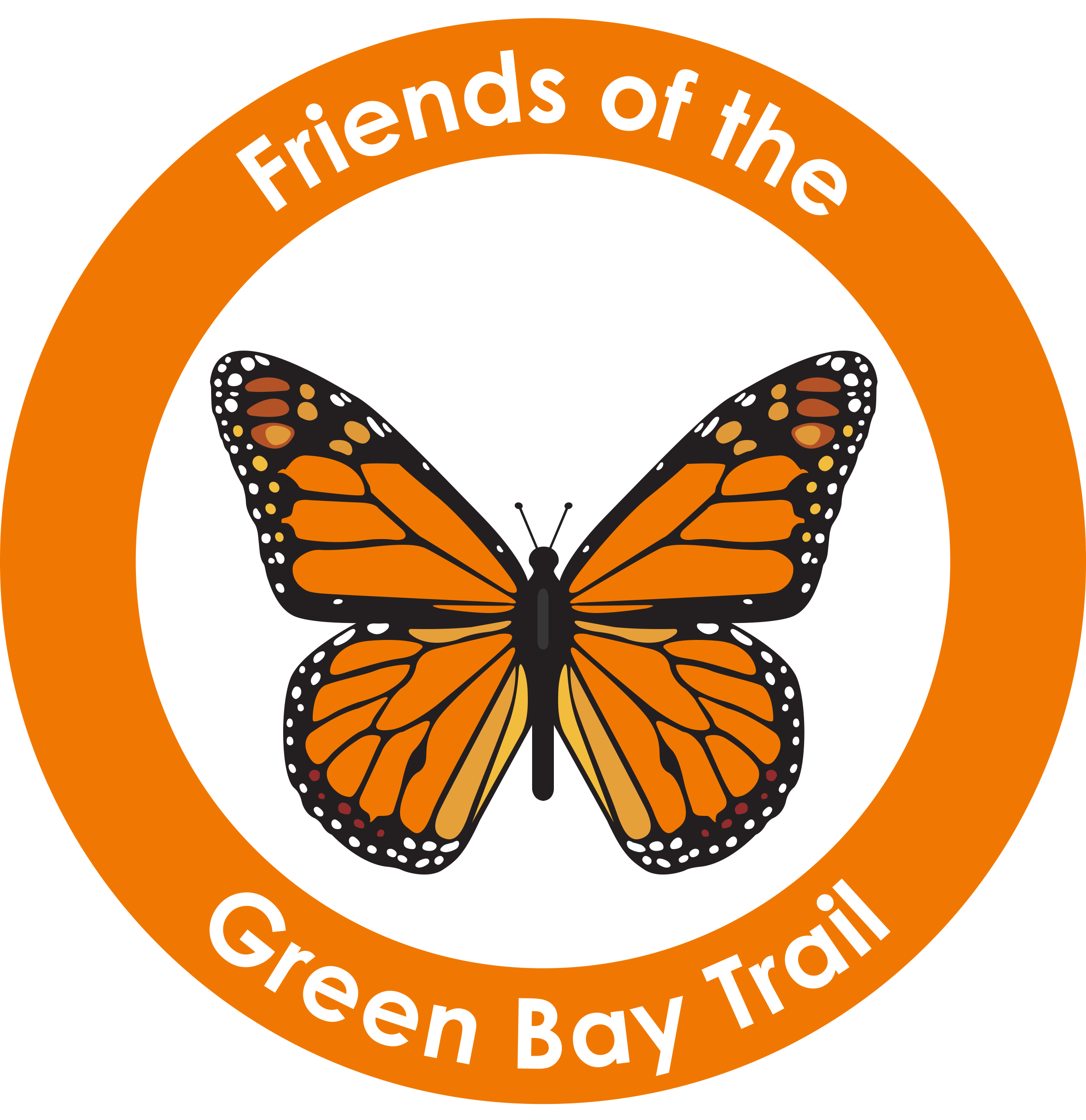Alien Invasion
Not little green men, but little green plants from across the seas.
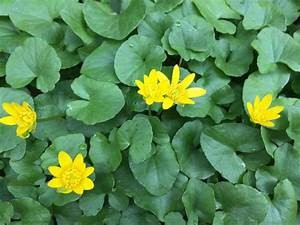 Invasive plants like buckthorn trees and garlic mustard spread rapidly and compete with native species for resources (soil, water and nutrients) and eventually can dominate the landscape. Their toll on the environment is second only to habitat destruction.
Invasive plants like buckthorn trees and garlic mustard spread rapidly and compete with native species for resources (soil, water and nutrients) and eventually can dominate the landscape. Their toll on the environment is second only to habitat destruction.
These invaders have no natural enemies, far from their homes in Europe or Asia where local insects, animals, fungi, bacteria, parasites, and diseases attack or feed on them and keep their population in check. Our native wildlife doesn’t recognize invasive plants as food. Insects and other animals have evolved to eat those plants that they have eaten for thousands of years. Invasive plants haven’t been here long enough for wildlife or pathogens to adapt to eating or infecting them.
How did they get here?
Most were brought deliberately. Buckthorn was introduced as a barrier hedge, lesser celandine and wintercreeper came as attractive ground covers. Agriculture brought sweet clover for animal feed and teasel for carding wool.
Once we have removed invasive species, we aim to restore a more natural forest or prairie ecosystem. Restoring native plants from these ecosystems involves activities such as collecting seeds from nearby healthy stocks, sorting seeds, growing seedlings in a greenhouse, planting seedling and trees, sowing seeds, watering and weeding.
Stop the Invasion!
In your own yard you can replace highly invasive buckthorn with friendly blackhaw viberum, nannyberry, serviceberry, American filbert, wahoo, ninebark or sumac. You can substitute invasive flowering plants like Queen Anne’s lace, white sweet clover and purple loosestrife with native purple coneflowers, cardinal flowers, cream wild indigo, wild quinine, blazing star and so many more! Alien tall grasses like Chinese or Amur silver can be replaced by neighborly little bluestem, prairie dropseed, June grass and Indian grass.
As the Friends remove invasive plants from the Green Bay Trail, we aim to restore a more natural prairie ecosystem.
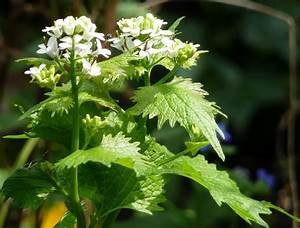
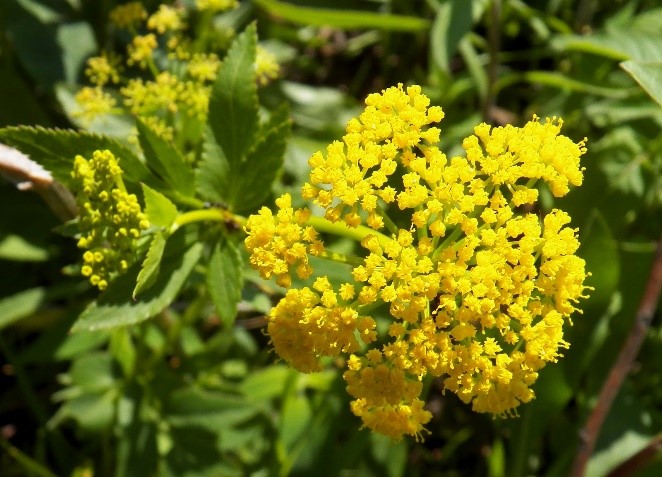
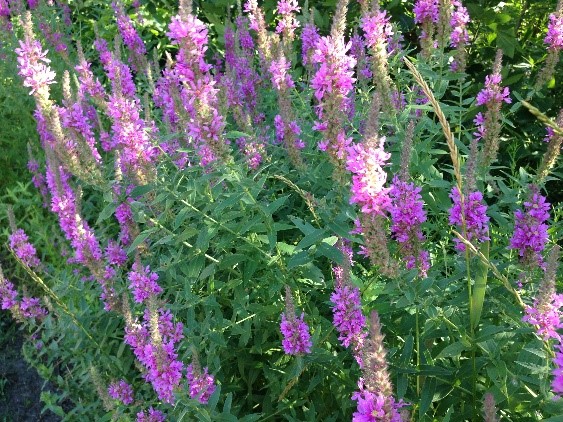
Common Buckthorn Summary
- Common buckthorn isa Restricted noxious weed.
- Brought over to the midwest from Europe in the 1800’s to serve as a hedge for private estates, common buckthorn readily invades natural communities, including woodlands, savannas and prairies.
- Buckthorn squeezes out native plants. Its foliage creates dense shade in which wildflowers, grasses, and shrubs are unable to survive.
- Its shade also prevents the growth of young oaks and damages soil and wildlife habitat. Because of threats from pests and disease, maintaining tree diversity is necessary for a sustainable habitat.
- In addition to its direct above-ground shading effects, buckthorn may alter below-ground soil nutrient cycling from the dispersion of harmful chemicals from its roots.
- Buckthorn contributes to erosion and a decrease in soil moisture, whereas native grasses and forbs, with deep root systems prevent erosion.
- Morton Arboretum estimates that 38% of the Chicago area’s canopy is buckthorn and growing. This is more than any other species.
- It is illegal to import, sell or transport buckthorn in Under its Exotic Weed Act, municipalities have authority to require removal of buckthorn from private property. Several counties and villages in Illinois offer grants to property owners to encourage the removal of buckthorn. Many surrounding communities, such as Evanston, Glenview, Highland Park and Glencoe actively encourage removal of invasive buckthorn. Local landscapers recommend scores of grasses, shrubs and small trees as privacy screen replacements.
Identification
- Leaves are opposite to sub-opposite, 1 ½ to 3” long, and ¾ to 1 ½” wide. They are elliptical in shape with minute teeth on margins and rounded to pointed tips. Leaves remain bright green in fall for some weeks after most other shrubs and trees have lost their leaves.
- Male and female flowers are on separate plants (dioecious). The flowers are small, green and fairly inconspicuous.
- Berry-like fruits are borne in clusters on female plants only. They are dark blue in late spring and early summer, turn black in August and persist throughout the winter.
- A shrub or small tree that can reach up to 22 feet, it often grows in dense thickets.
References:
https://www.pasquesi.com/trees-shrubs/invasive-buckthorn

